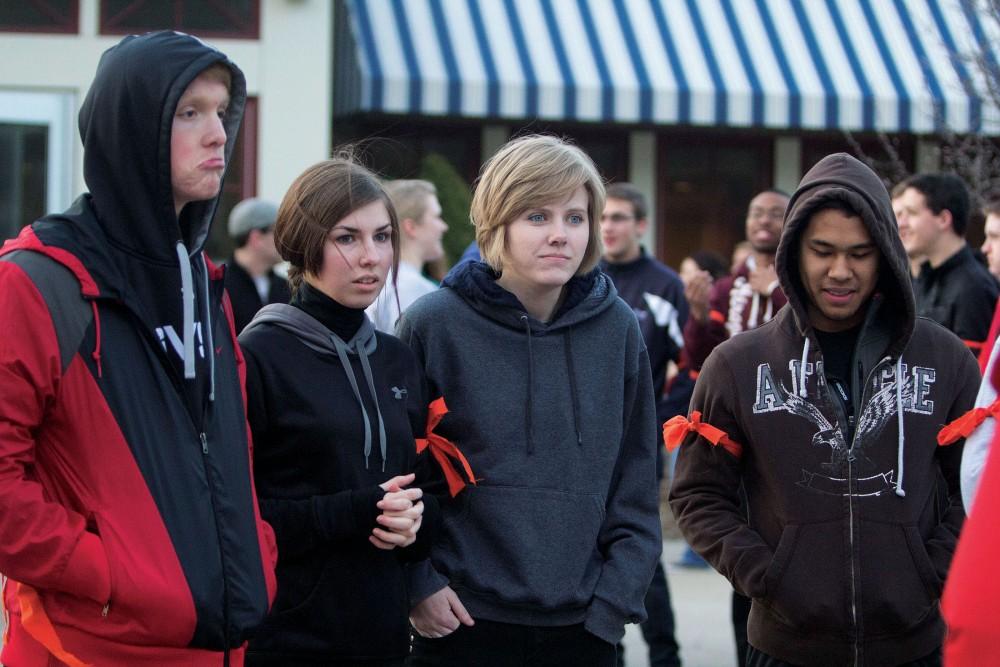Human vs zombies

GVL / Archive Humans prepare to run against zombies during last years Humans vs. Zombies run.
Nov 2, 2013
Holiday decor and festive tunes may be making an appearance already, but Halloween isn’t quite over yet. This year, the Laker Village Community Council of Grand Valley State University will present its second annual Humans Versus Zombies race.
“The Human Versus Zombie race is essentially a campus-wide game of tag,” said Travis Gibbons, the event’s adviser. “At the end of the race, there will be an after-party with some food in (the Kirkhof Center).”
Taking place on Nov. 9 at 7 p.m., the game involves zombies attempting to tag humans before the humans find doctors. The event will start with 10 to 15 zombies, with the rest of the participants starting as humans. The game combines tag with riddles; the outcome of the race depends on the humans’ ability to solve these riddles.
After the race, the participants will be provided with warm drinks and time to swap their spooky stories.
“As far as last year’s Humans Versus Zombie’s event, it was put on by a small group of students who were part of the Laker Village Community Council,” said Erin Ash, last year’s event coordinator. “They had an idea for an all-campus event that would meet the need for more social events on campus during the weekend and free for students.”
The humans will be released in waves every three minutes from two starting locations, one on the north side of campus and one on the south side of campus. The goal for the humans is to find three doctors and all parts of an immunity virus that is hidden throughout campus by using the riddles and clues that are given to them at the start of the race. When a doctor is found, the humans are given one of the pieces of the immunity virus. Once a human has found all three of the doctors and gathered all parts of the full immunity virus, that participant is safe and has won the race.
Along the way, if a zombie tags a human, the human becomes a zombie, joins the other side, and begins to chase the humans and attempts to tag them as well. The humans and zombies are differentiated according to the bandana they are provided with at the start of the race.
Last year’s event coordinators considered the game a success, and the race is expected to draw even more students to participate this year.
“We had over 150 students join us for the event last year and were extremely pleased with the feedback we received from the participants,” Ash said. “All in all, students loved it. We had quite a few students join in halfway through after seeing people sprinting across campus with orange bandanas tied around their heads. I expect this year to be another success, and I’m looking forward to seeing the tradition ‘stay alive.‘”

























